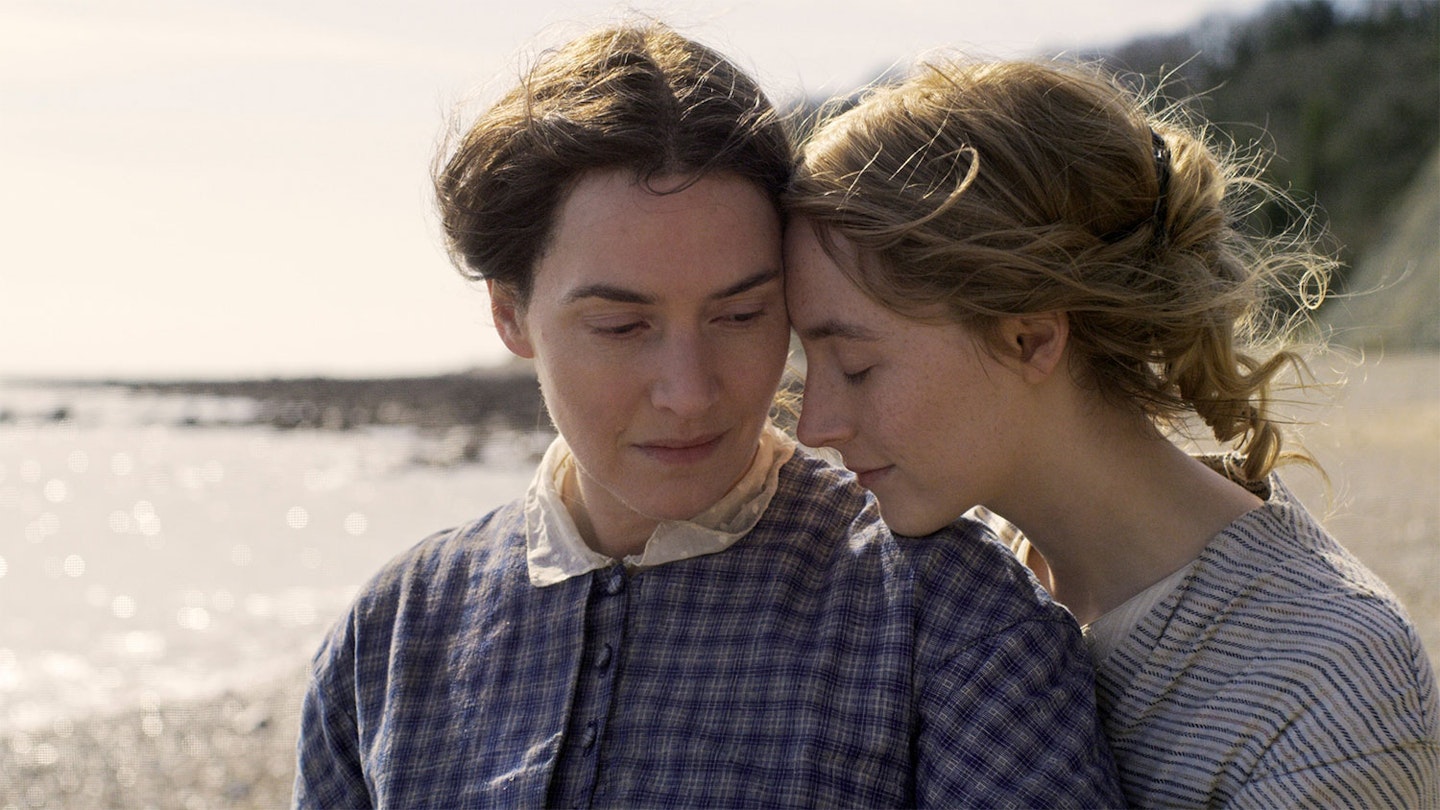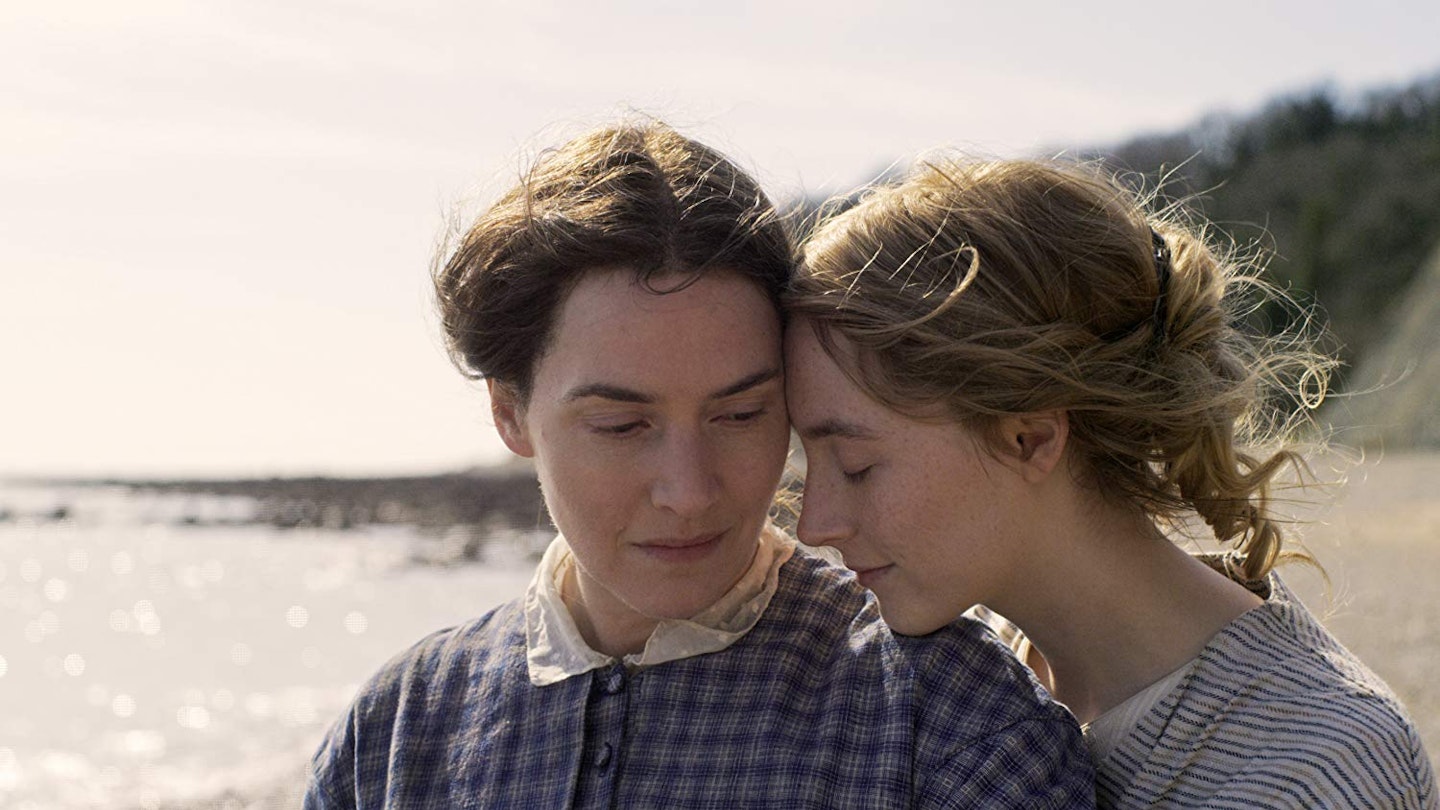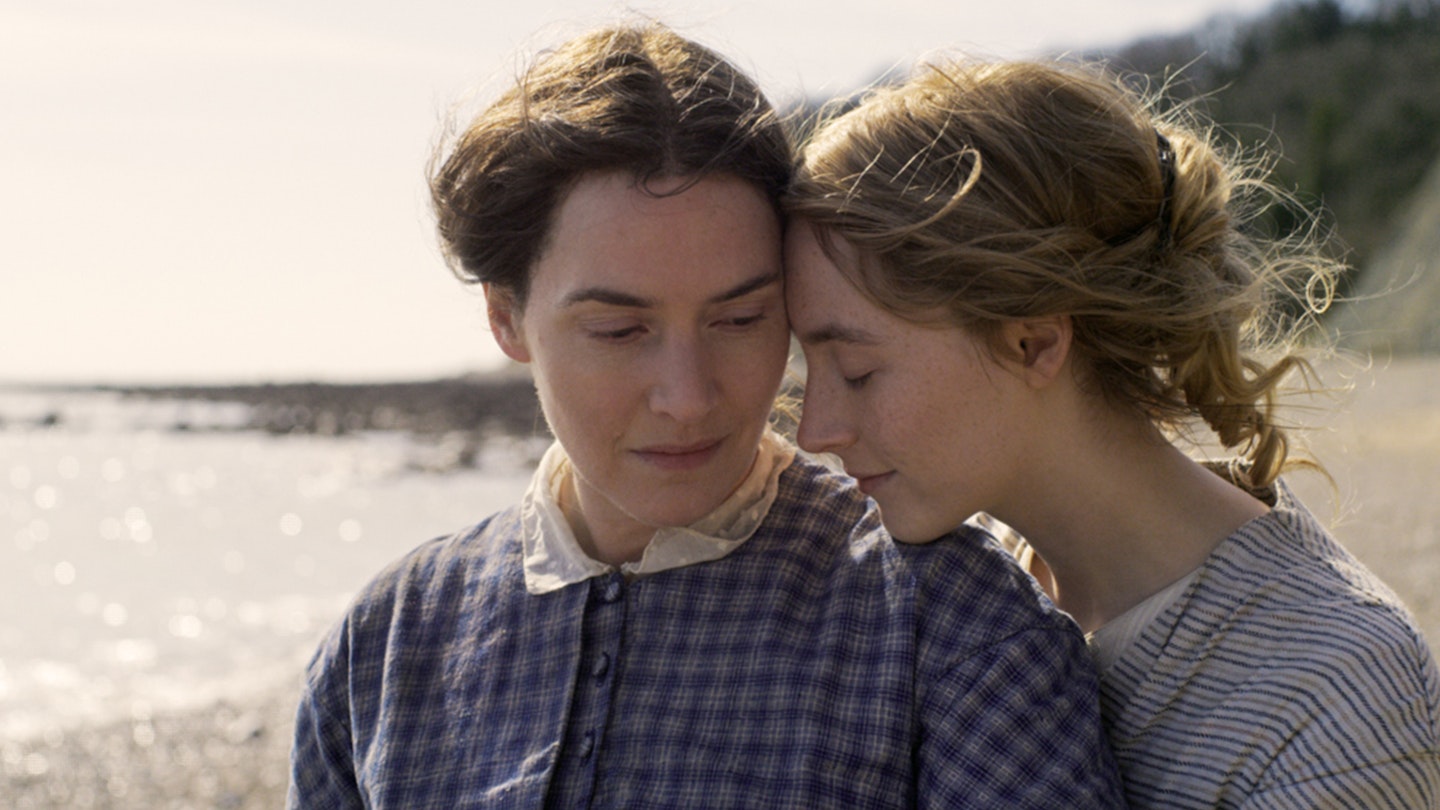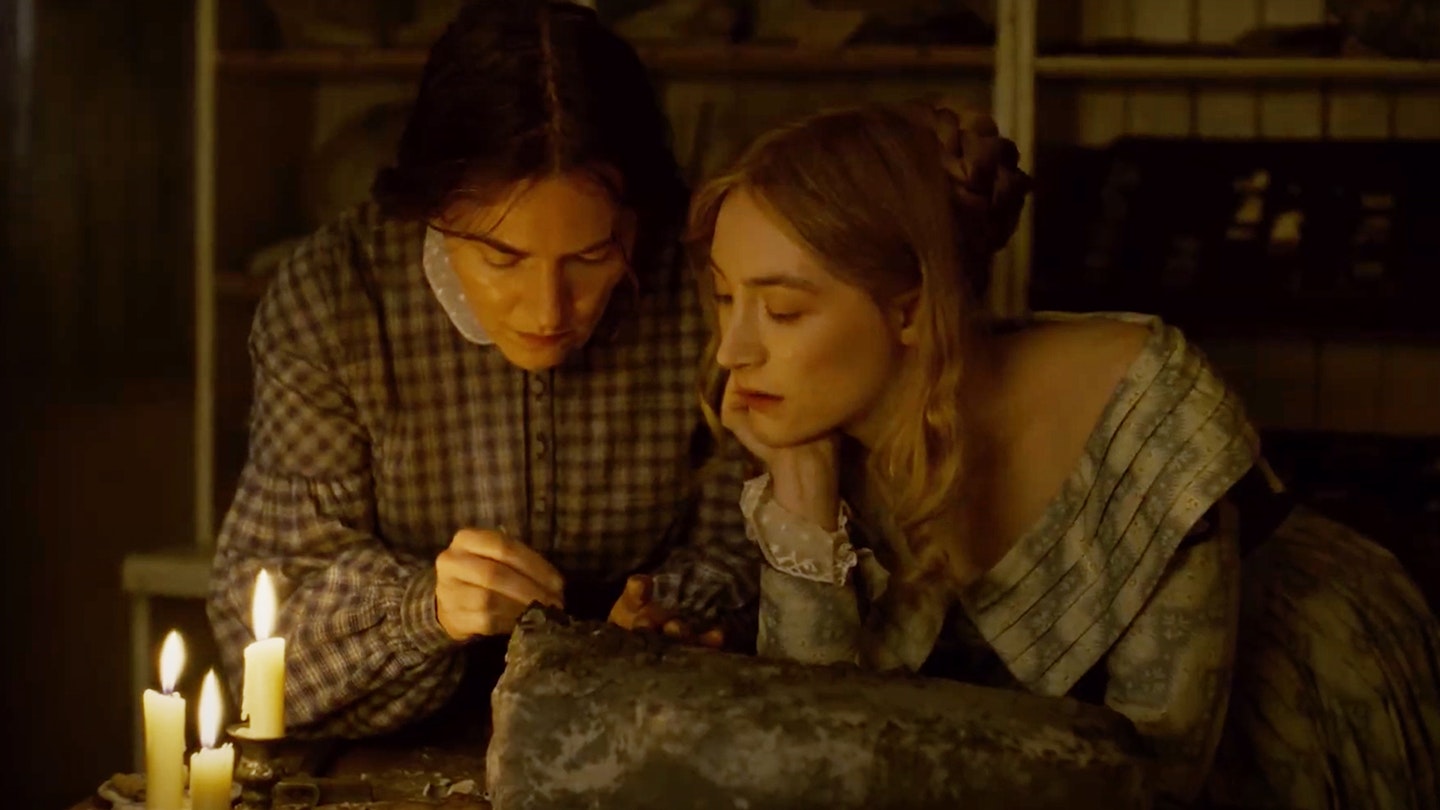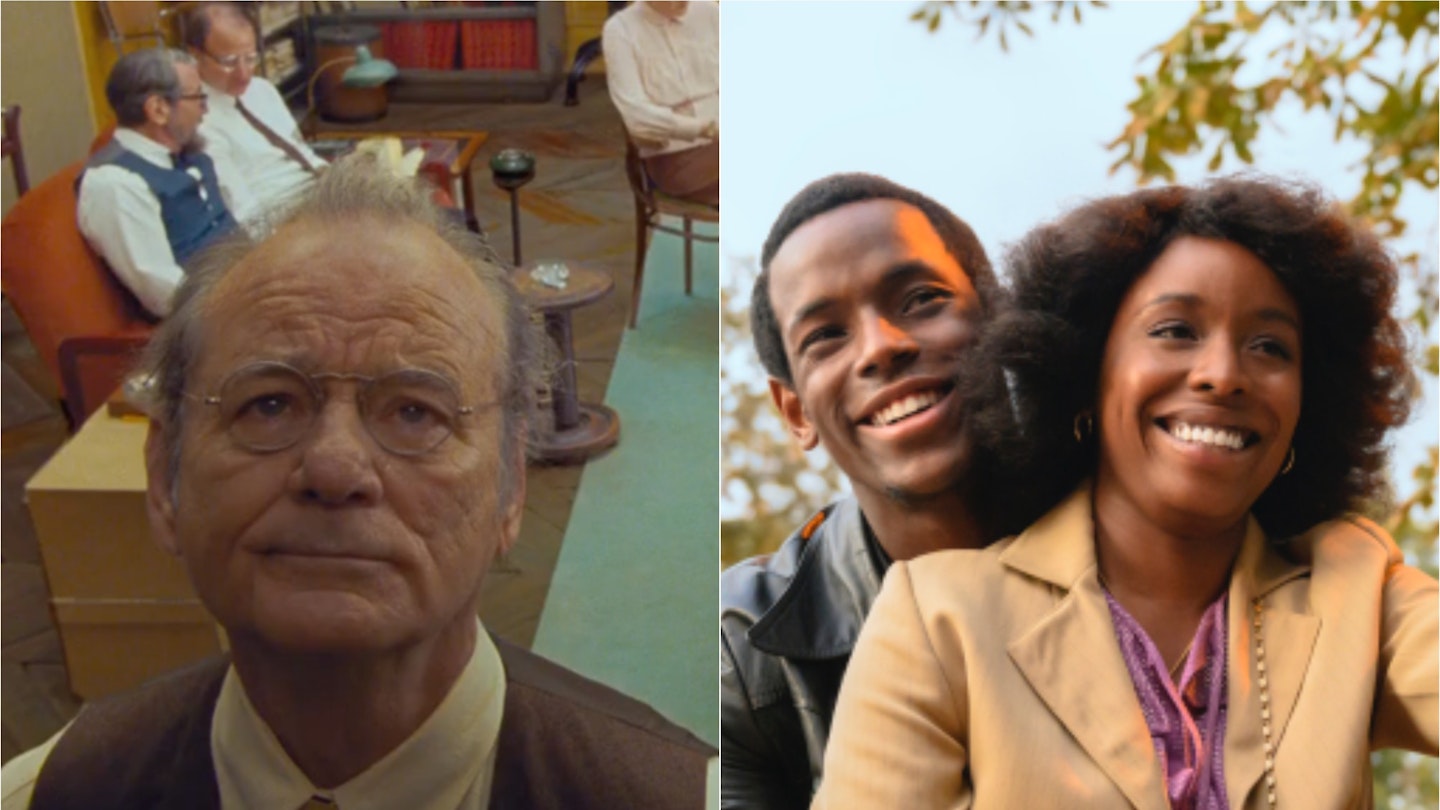You will struggle to find a British debut film as bracingly tender and hopeful as Francis Lee’s God’s Own Country. A fitful story about the burgeoning love between a migrant worker and his employer’s gay son drew its strength from its rolling Yorkshire setting, and could say more about the kindness of love with a plate of homecooked pasta than a whole sonnet.
Lee’s follow-up film continues to spotlight the cautious love that ignites between two untethered souls when they knock together. His protagonist is Mary (Kate Winslet, playing a real, renowned 19th-century palaeontologist) who shares a paltry home with her mother (a bristling Gemma Jones). Their life is funded by her keen eye for precious fossils on the ravaged local coast. Keeping exposition purposefully light, Lee establishes Mary’s solitary, stoic life through the rhythm of her vigorous daily grafting. Only through a few sparse interactions do we learn that her palaeontological potential has calcified into resignation after too many men have bottled her talents and presented them as their own.

One such culprit is Roderick Murchison (James McArdle), a curious, condescending scientist who arrives at Mary’s door with a thick wallet and Charlotte (Saoirse Ronan), his grief-stricken wife recovering from a recent miscarriage. Like God’s Own Country, the fledgling romance between Mary and Charlotte moves gingerly at first (in reality, the pair are documented as friends rather than lovers), and is aided by Roderick’s departure for work. As Charlotte’s steady gaze chips away at Mary’s veneer, Lee — a former actor himself — brings the film’s surrounding components to a simmer, unwilling to let substantial plot or dialogue distract from his central performances.
It’s Winslet, however, who defines the film, delivering the performance that you’ve wanted from her for years.
Ronan summons subtle agency within the confines of a character who has been spoken for her whole life (a scene in which Roderick orders Charlotte’s dinner feels written purely to enrage). It’s Winslet, however, who defines the film, delivering the performance that you’ve wanted from her for years. Stripped of any significant backstory, she moves intently from moment to moment with a broad, assured physicality that is both remarkable and rarely celebrated on screen. In the film’s enchanting, singular sex scene, the camera maintains a naturalistic stance as it captures Winslet’s strong legs, belly and breasts, while cinematographer Stéphane Fontaine bathes her skin in a gaslamp lustre.
What Ammonite lacks in story it makes up for in its absorbing craftsmanship. The detailed costume and production design eschews the florid fixtures of a period drama in favour of something more grounded and realistic, and Fontaine uses muted, handsome greys and blues to define the unruly elements that Mary and Charlotte move through side by side.
With its stark and challenging vistas, pointed framing of class and gender and nurtured, emboldened performances, Ammonite feels like an extension of Lee’s already impressively well-honed skills rather than a stride into new terrain. When a filmmaker captures intimacy as intuitively as Lee, however, it feels like there can never be too much of a good thing.
